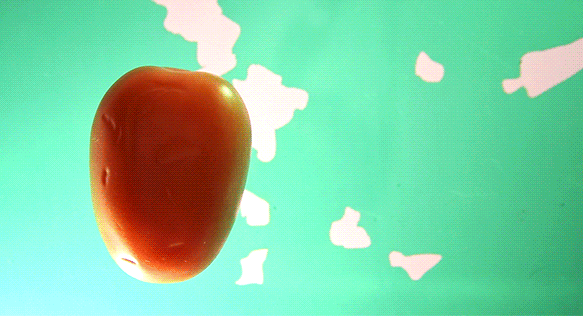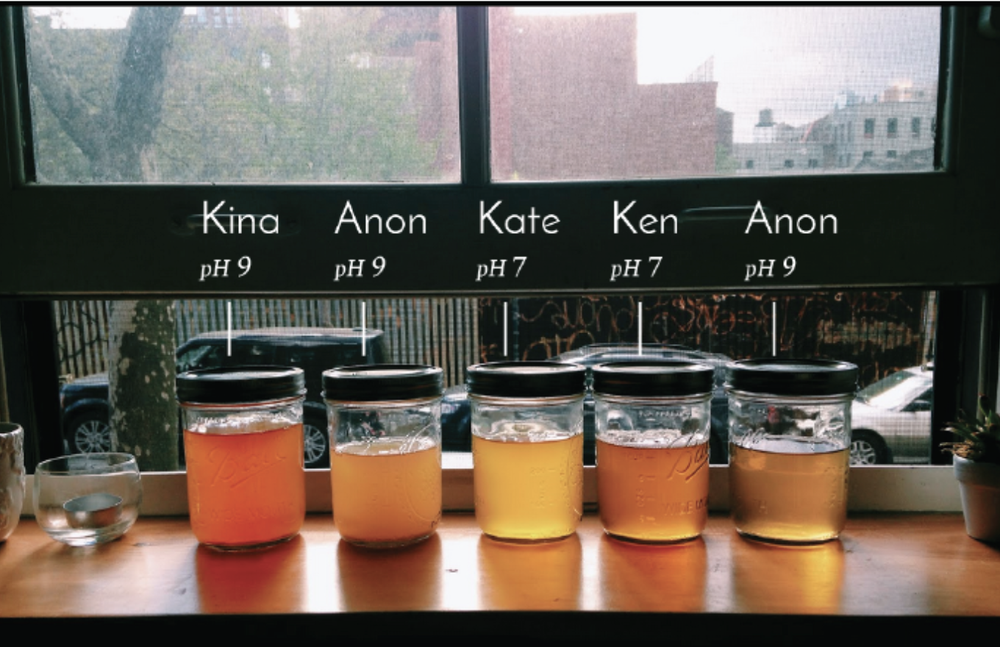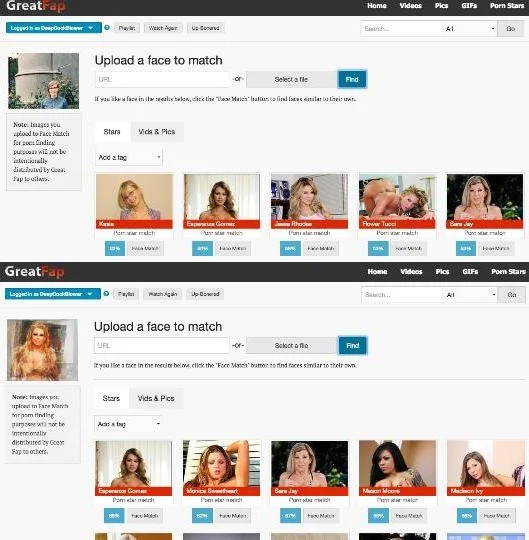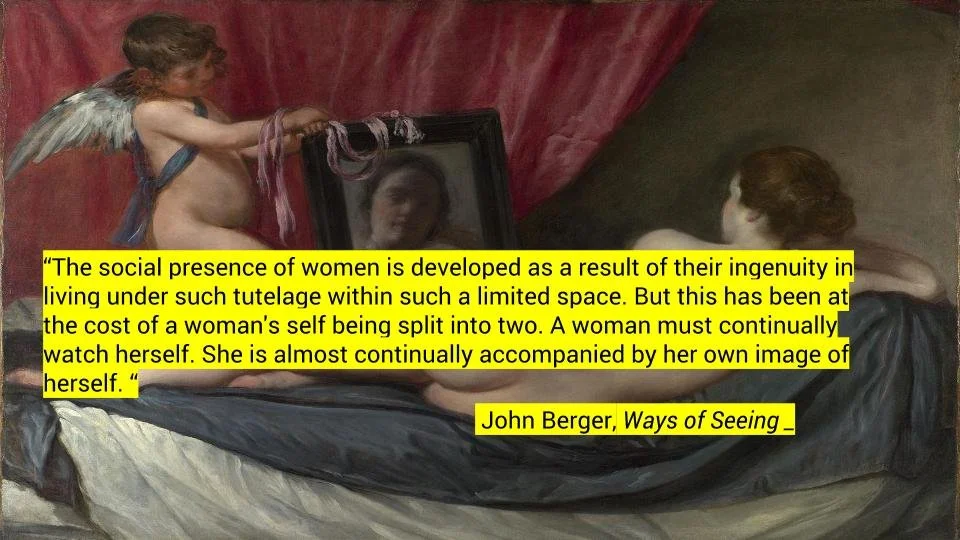OTHER GRAD SCHOOL PROJECTS
OTHER GRAD SCHOOL PROJECTS
Energy to Light
3D prints, plywood, handmade analog circuits, Arduino Uno
with Yu Ji
Energy to light is a data visualization that sheds ‘light’ on the largest energy consumers per capita throughout an average day.
Featured in ITP Group Show
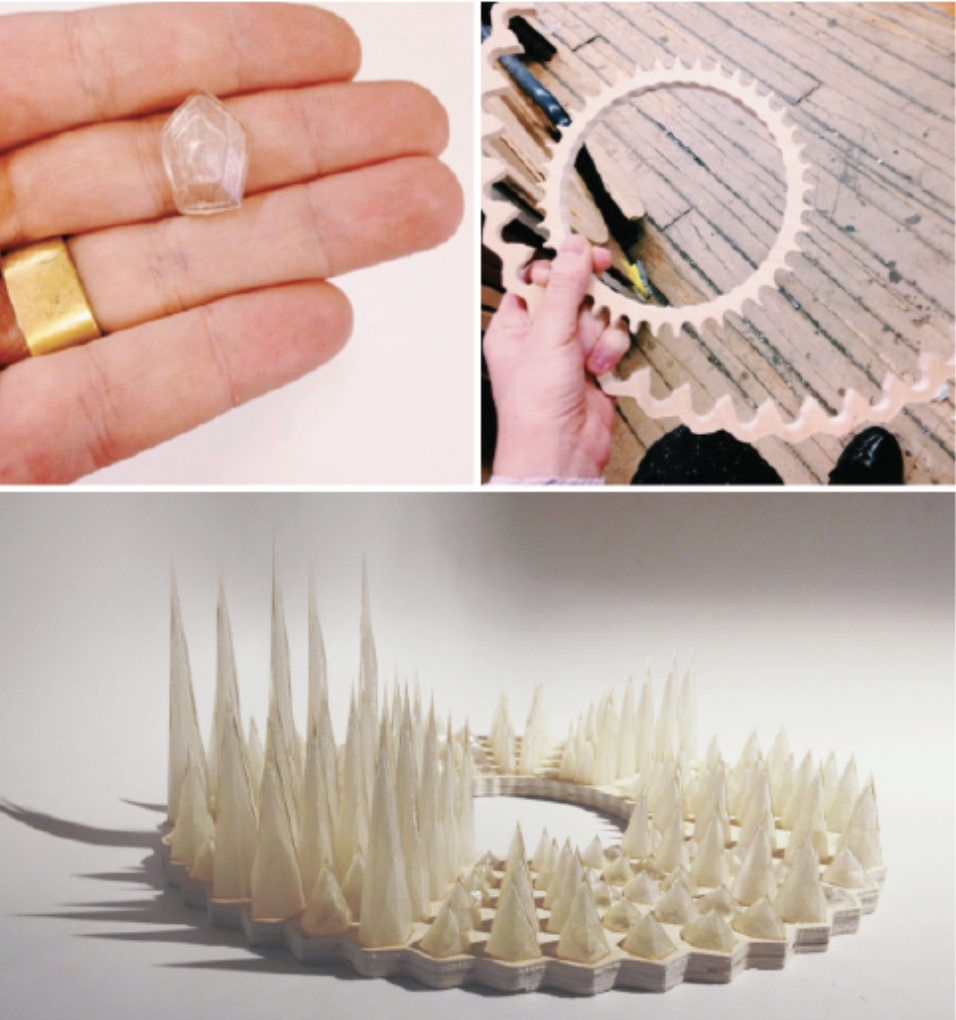
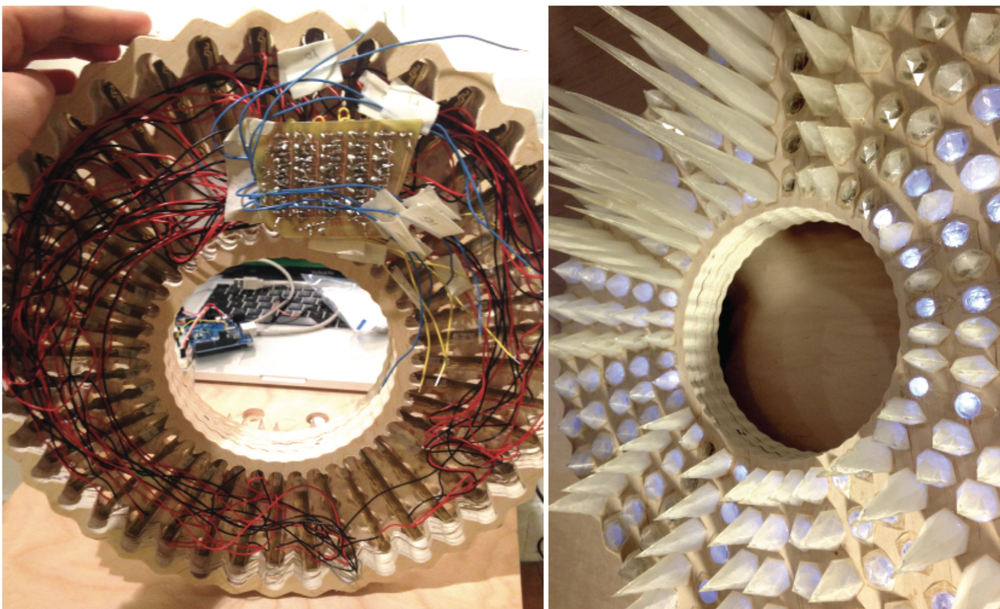
Urine for Color
wool, donated urine, onion skins, blackberries, plywood
In centuries past, people would use urine as a mordant during dyeing. This led me to wonder if the mineral content of different people’s urine could shift the color of a dye.
Urine for color demonstrates the colorful possibilities of using waste (reclaimed urine) as a material for art. Natural fibers were dyed with blackberries, onion skins, and individual urine baths. A spectrum of colors resulted and was used to create a cross-stitch piece and a knit piece.

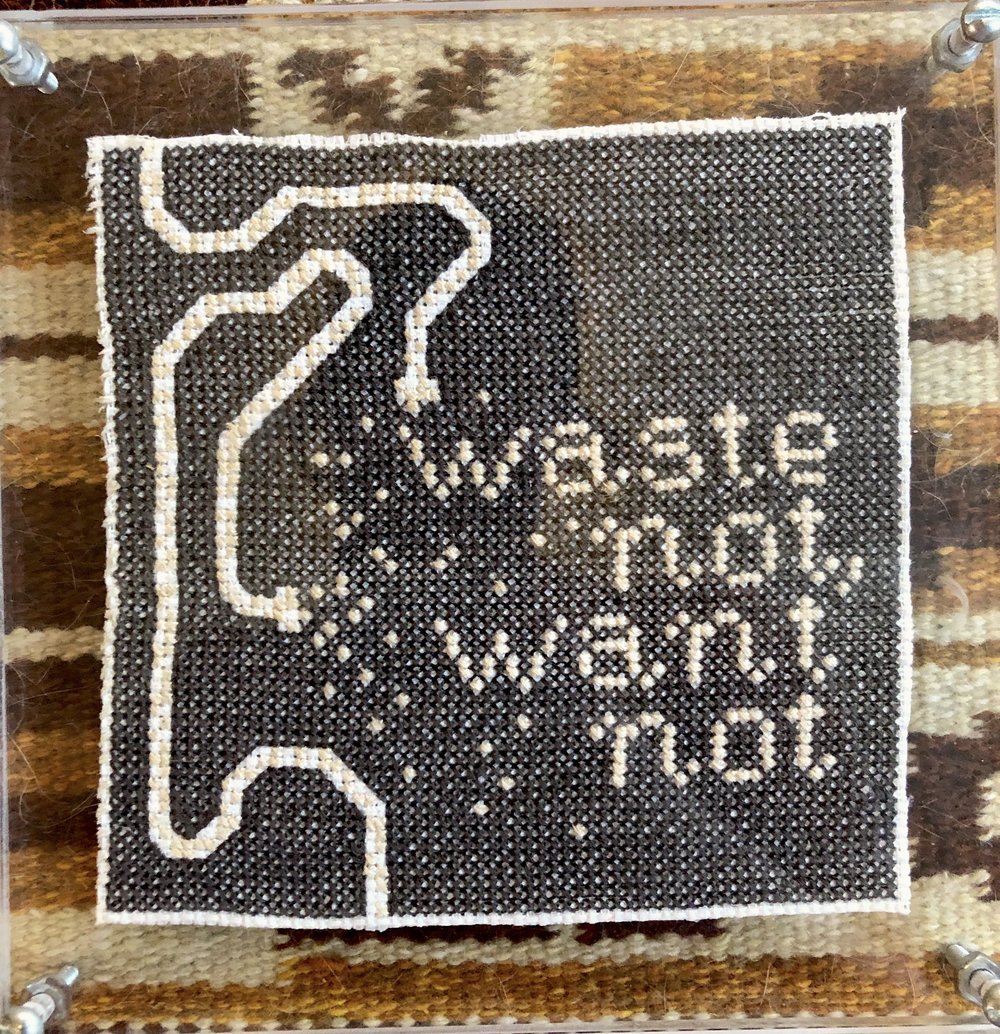

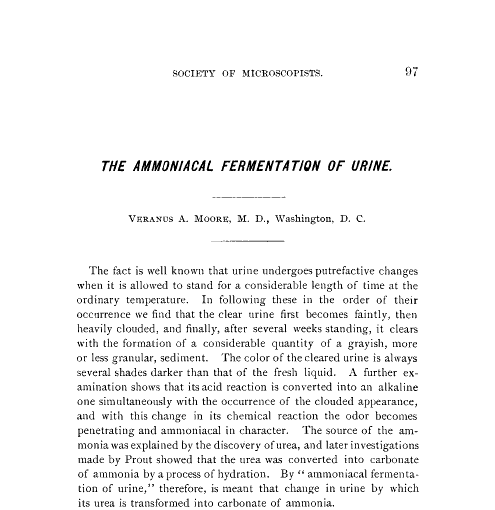
Faces in Extremis: New Territories in Technology-Mediated Sexual Identity
face match, GreatFap, r/doppelbangher, photoshop
with Pamela Liou
Presented on a panel at Theorizing the Web 2014 along with a paper about the project.
The process of querying large databases with facial recognition, technologies developed for militaristic or surveillance purposes, has flourished commercially through Facebook’s automatic detection API. This API, allowing the system to recognize people in a photograph without tagging. A new Facebook-led initiative, called DeepFace reconstructs a 3D model of a person’s face, allowing for near-human levels of accuracy.
The ability to rapidly pinpoint an individual in a network coupled with the technology to reconstruct that individual’s likeness poses profound ontological disturbances, and if recent precedents are any indication, those disturbances are disproportionately doled out to women.
In Faces in Extremis, we attempt to navigate these new terrains by subjecting our own images to a series of exercises designed to reconstitute how existing mechanisms view us.
In Ways of Seeing, John Berger details the inherent paradox of female subjectivity– namely the incessant burden of their image as perceived by others. Social conditioning effectively de-couples a woman’s identity so that she is both looking out into the world and looking into herself. The internet provides the perfect companion for this condition– a two-way mirror for which a woman can view themselves as others view her.
To fantasize about women– of a particular woman– sits comfortably within the legal rights of an individual. The law does not mandate a notarized form of consent from the subject of a man’s desire. Her consent in the realm of fantasy is, effectively, moot. Those affordances all but vanish when a person makes an untoward advance on a woman physically– her consent matters. Where consent becomes problematic is in the realm between the vistas of the mind and physicality. The digital world is one such murky domain.
In the sub-Reddit /r/doppelbanger, men submit photos of women they desire — an ex-lover, an aloof co-worker, a comely barista. Moderators and members attempt to match these photos to lookalike porn star. For our purposes we submitted Pam’s photo to these pro-bono mechanical turks.
Pam’s photo gives no impression of her body– just the shoulders up. Other than an inconclusive recommendations to “Cyndall” and a few hilarious jabs at her green coiffure, it didn’t really make it to the front page. Instant slush pile. And yet, the photo garnered 6230 views within weeks. After an initial spike, views held steady. Our conclusion is that the participants in these forums are less interested in offering matches than the submitted content itself.
The image of me submitted to Face Match along with the composited images of my porn matches
Using a service like facematch or GreatFap offered instant matches. The nether regions of the internet are littered with these sites that promise to match any face to a porn star using crude face recognition technologies. By submitting a photo to this site, you are giving the service blanket rights over the distribution.
So naturally, we submitted our own photos.
We took our closest matches and blended their photographs to reconstitute an after-image of how these algorithms view us. We fed our results back into the engine, and it was intelligent enough to detect a few matches in our composite. The reification of fantasy through technology is coming closer and closer. What happens when something as lossy as fantasy achieves total vérité?
The image of Pam submitted to Face Match along with the composited images of her porn matches
We aren’t meant to see our sexual desires played out at high resolution. As Roland Barthes states, “it is intermittence, as psychoanalysis has so rightly stated, which is erotic: the intermittence of skin flashing between two articles of clothing (trousers and sweater), between two edges (the open-necked shirt, the glove, and the sleeve); it is this flash itself which seduces, or rather: the staging of an appearance-as-disappearance.” In the internet age, perhaps the intermittence is the space between pixels, or a JPEG artifact. If any woman can be made into a naked puppet without her consent or even knowledge, the result becomes banal, and ultimately a universal deadening of the erotic.
Cutting Into Urban Food Deserts
USDA food desert data, Processing, Illustrator, plastic sheets, knife, tomatoes
A series of food preparation mats with cut voids representing the difficulties of living with poor food access in New Orleans and Atlanta
A food desert is “a geographic area where affordable and nutritious food is difficult to obtain, particularly for those without access to an automobile.” Food deserts occur in low-income, and often rural, communities. Having lived in New York City and Atlanta, I have experienced two extremes in urban food accessibility and wanted to demonstrate the difficulties poor food access presents.
Using US Department of Agriculture food desert data, I created a series of cutting maps that represent the food access situation in San Francisco, Atlanta, and New Orleans. This set portrays the extremes in urban food deserts with San Francisco having the best urban food access and Atlanta and New Orleans having the poorest food access. In Atlanta, food access falls along racial lines with “four times as many supermarkets in predominantly white neighborhoods as in black neighborhoods” and “only 8 percent of African Americans living in a census tract with a supermarket”, according to one study.
A cut void in the map represents a food desert: a place where a resident would have to struggle to find healthful foods.
Making a mess while cutting tomatoes didn’t lead to malnutrition or strengthen cycles of poverty but I hope it helps show why access to healthy foods should be a human right.
